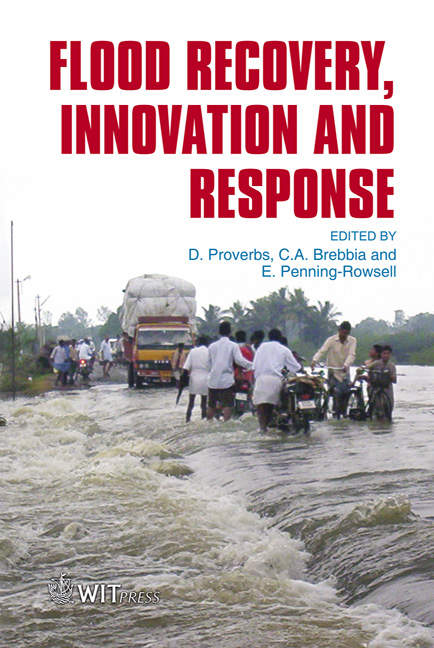History Of Flood Fighting In The Kisosansen River Basin
Price
Free (open access)
Transaction
Volume
118
Pages
10
Page Range
123 - 132
Published
2008
Size
313 kb
Paper DOI
10.2495/FRIAR080121
Copyright
WIT Press
Author(s)
Y. Takeuchi, M. Takezawa & H. Gotoh
Abstract
The Isewan Typhoon caused considerable damage to the downstream regions of the Kisosansen River Basin on 26th September 1959. It caused approximately 4,500 deaths in and around Nagoya City, the most industrial city in Japan. This study describes the history surrounding the major flood mitigation projects related to land use in the Kisosansen River Basin since 100 A.D. when paddy fields were first established on the alluvial plain. Land use of the area gradually evolved to cover the entire alluvial plain, developing from subsistence farming to modern sophisticated industry. This study shows that economic development in the both side plains of the river has been altered since the construction of the eastern side dike on the Kiso River. The Kisosansen River Basin, with a catchment area of 9,100 km2, is drained by the Kiso River, the Nagara River and the Ibi River. These rivers previously flew in the Nobi Plain as a single river, with successive floods producing a change in the main channel. Keywords: Isewan Typhoon, Kisosansen River, history of flood mitigation works, benefits associated with flood mitigation works. 1 Introduction While flood damage has always been associated with agriculture and human settlement, they have increased in size and frequency as land use has changed for settlement, agriculture, commerce and industry. The Isewan Typhoon affected the downstream regions of the Kisosansen River Basin on September 26, 1959. The extraordinary damage caused by this natural disaster was due to a combination of the natural force of the typhoon itself and the history of human activities in the area. This study describes the history of flood fighting with
Keywords
Isewan Typhoon, Kisosansen River, history of flood mitigation works, benefits associated with flood mitigation works.





